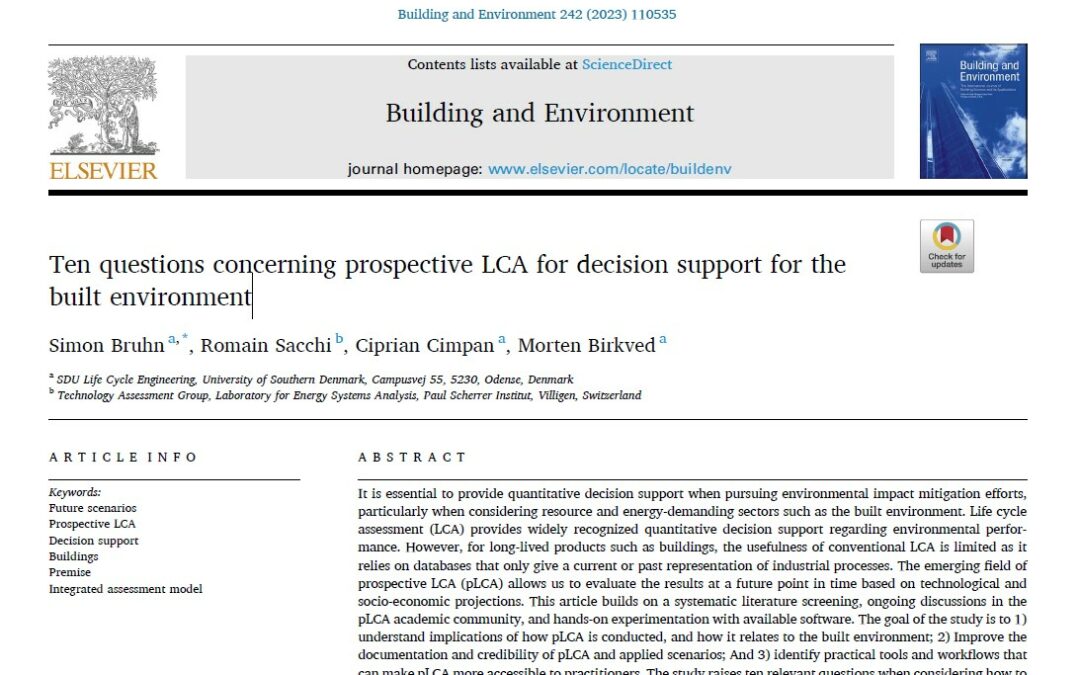Journal: Building and Environment 242 (2023)
Status: published
Publication date: 2023
Abstract:
It is essential to provide quantitative decision support when pursuing environmental impact mitigation efforts, particularly when considering resource and energy-demanding sectors such as the built environment. Life cycle assessment (LCA) provides widely recognized quantitative decision support regarding environmental performance. However, for long-lived products such as buildings, the usefulness of conventional LCA is limited as it relies on databases that only give a current or past representation of industrial processes. The emerging field of prospective LCA (pLCA) allows us to evaluate the results at a future point in time based on technological and socio-economic projections. This article builds on a systematic literature screening, ongoing discussions in the pLCA academic community, and hands-on experimentation with available software. The goal of the study is to 1) understand implications of how pLCA is conducted, and how it relates to the built environment; 2) Improve the documentation and credibility of pLCA and applied scenarios; And 3) identify practical tools and workflows that can make pLCA more accessible to practitioners. The study raises ten relevant questions when considering how to use pLCA for decision support in the built environment. This list of questions is not exhaustive nor definite, and recommendations are possible answers suggested by the authors. Using scenario narratives from energy and Integrated Assessment Models allows for systematic and consistent transformation of LCA databases to represent possible futures. However, there is a need for pLCA practitioners to improve documentation to ensure that the goal and scope of the LCA are compatible with the chosen future scenario. In the case of built environment, it is relevant to consider different projection years when modeling construction, operation, renovation, and demolition phases, respectively, as they span several decades. Not doing so can misestimate the effects changing socioeconomic and technological contexts have on the life-cyle impact of buildings.
